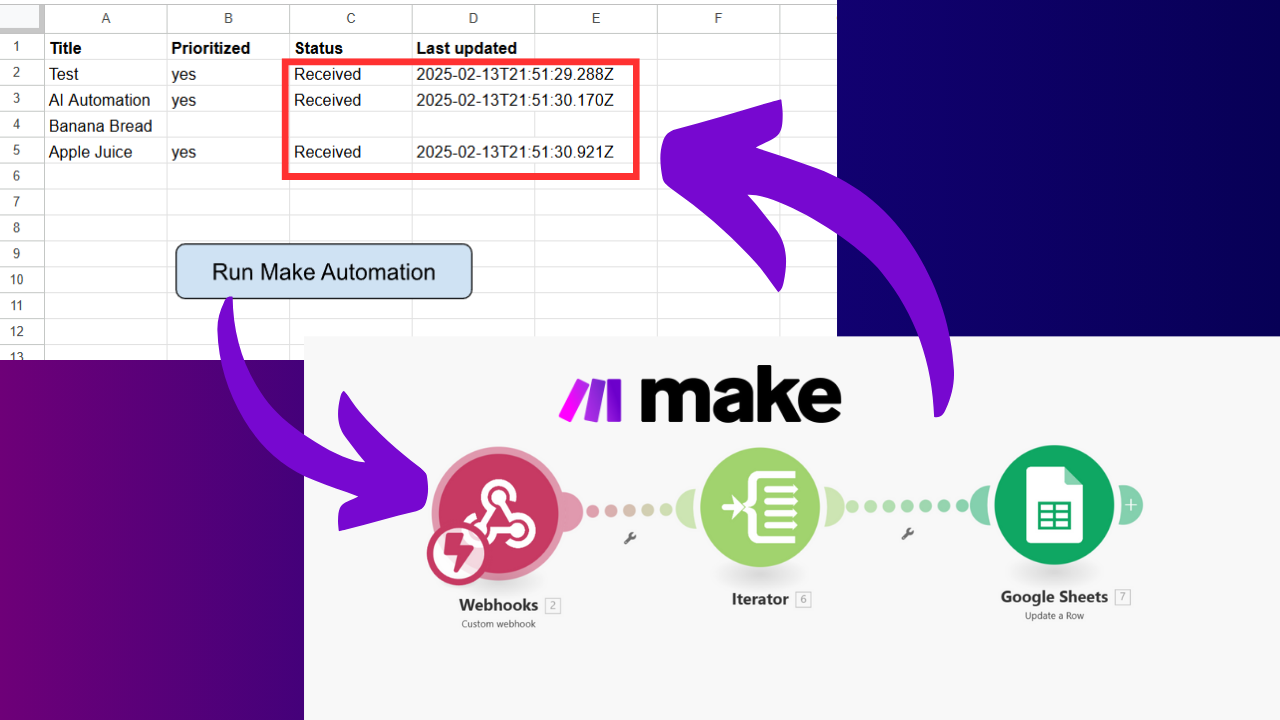The first thing that comes to mind when combining AI and SEO is to have a lot of little AI bots that are writing Blog posts and ranking your website on auto-pilot.
But if you have already seen AI-generated blog posts, you will find that the produced content lacks quality and sounds blunt. I wouldn’t want to have this kind of articles on my website.
However, AI Automation does not need to be taking over your SEO efforts. Instead, it can function as a sparring partner that will take over tedious and repetitive tasks in your SEO efforts.
I have prepared some practical AI Automation examples for SEO that you can implement today.
Table of Contents
ToggleWhy you should use Al Automation in your SEO efforts
AI combined with Automation is perfect to reduce repetitive tasks and support in creative, high-quality work. And that’s basically, what you do in SEO.
You have some low-value tasks that you do over and over again. For example sending links, creating documents, moving files or researching/gathering information about a topic that you want to write about. All the things that can be automated.
And then there’s AI integration. This can help you to analyze data or resources, be your creative partner or find topical gaps in your content.
Long story short: There are a lot of use cases where AI Automation can be very beneficial for your SEO:
- Saving time on routine tasks
- Faster, in-depth research
- More accurate data analysis
- Higher quality AND quantity output
29 amazing AI Automation Examples for SEO
Let’s finally look at some real examples. For a better overview, I’ve grouped them by use case.
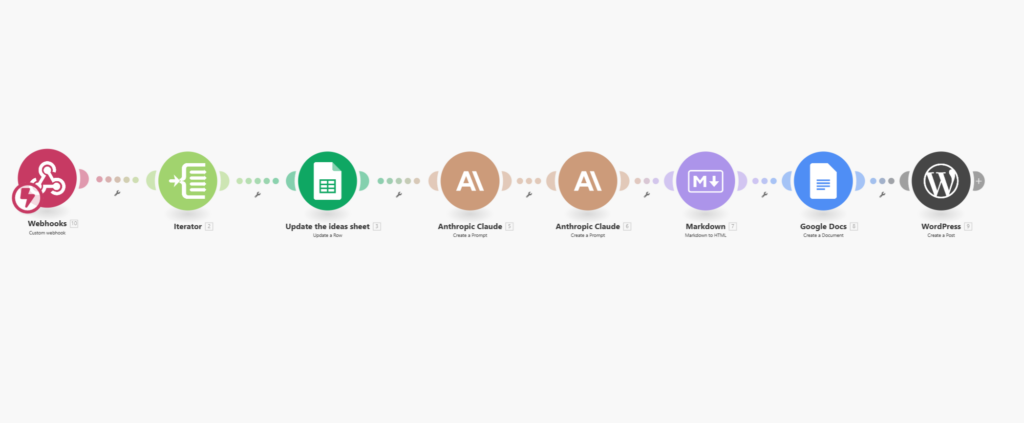
Keyword Research Automation
1. Related keyword suggestions.
Tools like ahrefs or Semrush are the big players when it comes to keyword research. But everyone who worked with these tools knows, that they are not always accurate.
The most prominent example are zero volume keywords. These are keywords that are shown with a search volume of 0, but in reality, they might have hundreds of people searching these keywords.
AI Automation can help you identify these gaps by analyzing your content and come up with related topics.
2. Automated keyword clustering
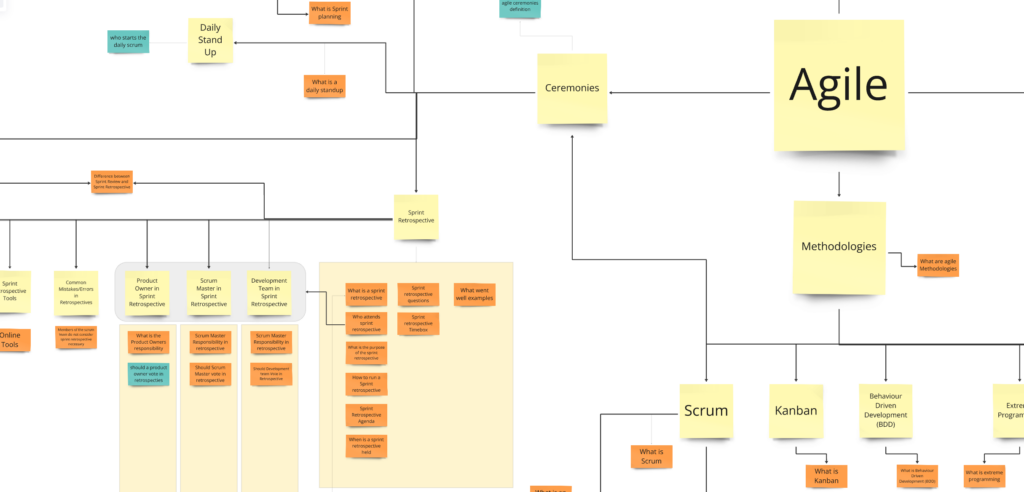
You can use AI to cluster your content. For example, you can provide a topic you want to write about, maybe even a finished blog post. And AI will create related questions or information that supports the piece of content.
By automating this, you can let AI create these ‘content suggestions’ after each blog post you write.
3. Search intent analysis
Sometimes, I see a keyword but don’t really know what the user is expecting when searching for this keyword.
So, having our target group in mind, we can ask AI to analyse the users search intent for a specific keyword.
This will help us to know what to include into the blog post, as well as how to write the article itself. It’s always easier to write, having a specific persona in mind.
4. Competition difficulty scoring
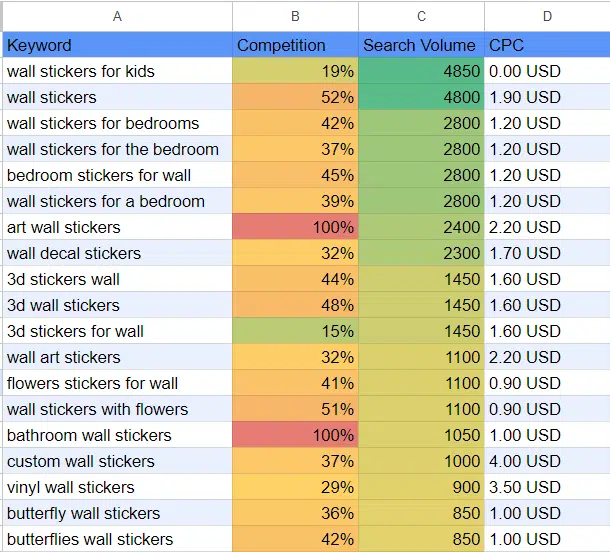
At the end of the day, we want our content to rank on the first page on google.
But how do we do that? – A: By writing better content than our competitors!
Of course, there are way more things that need to be considered in order to rank on page one. But having better content than your competitors is the most important one.
You could have an AI-powered Automation that is comparing your content against your competitors and identifying possible improvements that you can implement.
5. Long-tail keyword discovery
Another AI Automation example for keyword analysis is a long-tail keyword discovery automation.
This is connected to the automated keyword clustering but focuses more on long tail keywords.
The past few years, (also thanks to ChatGPT) users are getting more comfortable searching for long tail keywords.
Nowadays, digital content needs to be more specific and in-depth. Covering those low-volume but highly specific long-tail keywords will give you more topical authority and might provide a competitive advantage against competitors.
6. Trending topic identification
This will work best if you already have some traffic on your site and enough data to back up this use case.
The idea is to track the produced content, maybe even integrate Google trends and social media to identify trending topics.
You could base these trends on your own topics and identify areas or keywords that get more traction than usual.
This can be a signal to double-down on that type of content.
Competitor Analysis
7. Competitor content monitoring
At some point in your SEO journey you should start looking at your competitors.
Analyzing their behaviour and the content they publish can give you valuable insights into their content strategy. You can learn from their winnings (or mistakes) and adapt your strategy accordingly.
All of this can be automated and doesn’t even need a lot of AI in it.
A little tip to get your competitors whole website structure –> get their XML sitemap.
8. Backlink opportunity detection
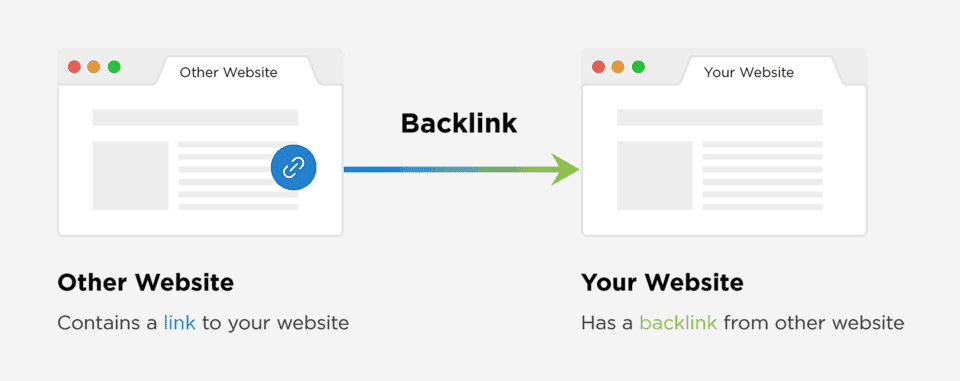
Backlinks are the literal currency in the digital world.
The more you have, the higher your authority, the higher your ranking, the more money you earn. (Simplified theory)
One proven strategy to acquire backlinks is to search for ‘dead links’ on websites that are relevant for your niche. These links can either be outdated or link to a website that doesn’t exist.
A custom AI workflow can help you find these links and inform you whenever there’s an opportunity to switch the link (to your site).
The only thing left to do is to contact the website owner and inform them about a broken link while providing a relevant alternative.
9. Content gap analysis
Have you ever heard of ‘expert blindness’ ?
It’s when you are so knowledgeable in a specific area that all the basics get ‘too obvious’ for you.
But this basic knowledge might not be as obvious for others, which will leave the user with open questions.
We don’t want this.
Instead, we could use AI to analyze our content and do a content gap analysis. This way, we can be sure that there are no unanswered questions left.
10. Market position tracking
There are some tools that already do this for you. They will track your content and provide you with the rankings for your pages by keywords.
Google Search Console is the most popular tool to do this. But it will only track your own website.
You could individualize your position tracking and include other data like competitors rankings to identify possible reasons for a change in your, or your competitors ranking.
Content Research and Planning
11. Topical cluster generation
The best way to get topical authority and rank your content higher, is to write content clusters.
But these clusters are rarely “finished” and while writing your articles, you will see that some more topical ‘branches’ open up.
An AI Automation can help with this by keeping track on your content and suggesting related articles, which will (1) help you find more topics to write about and 2 strengthen your topical authority.
12. Content calendar automation
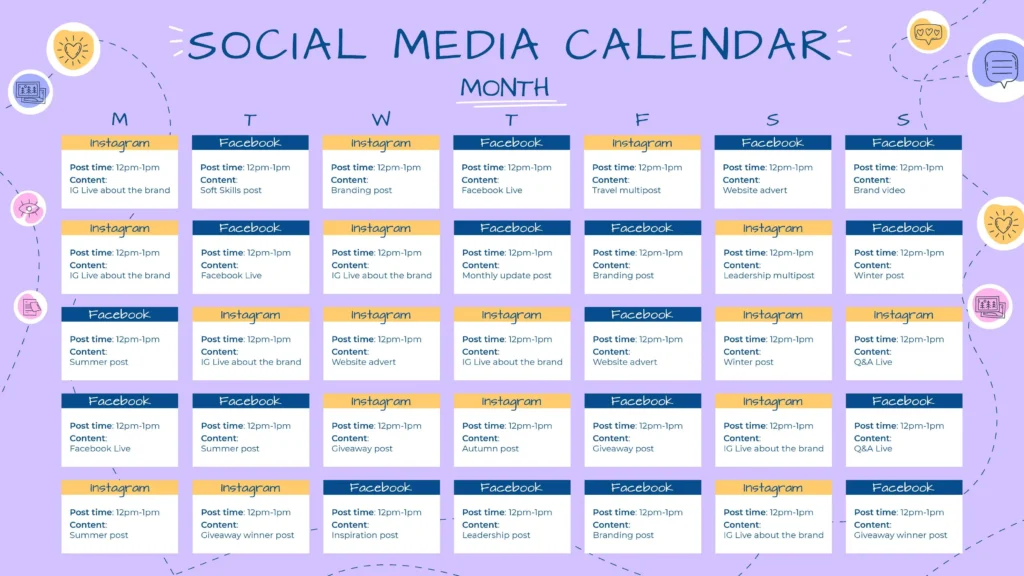
AI could help you populate the next batch of content ideas to write about, and already plan them into a content calendar.
This works very well when it’s also generating more ideas in the backend, so that you don’t have to think that much and can concentrate on actually writing the content.
This AI Automation could even be extended with auto scheduling, or even a content mixer, like the next idea.
13. Content repurposing
You might already have a bunch of content on your website. Have you ever thought of repurposing this content?
A blog article can easily be split up into multiple short form tweets, a video, a few shorts.
A podcast can be repurposed into a blog post or a video.
You see where this is going. Why create content multiple times when you can create it once and mix it into other formats.
An AI Automation can do this work for you.
14. Content Brief generation
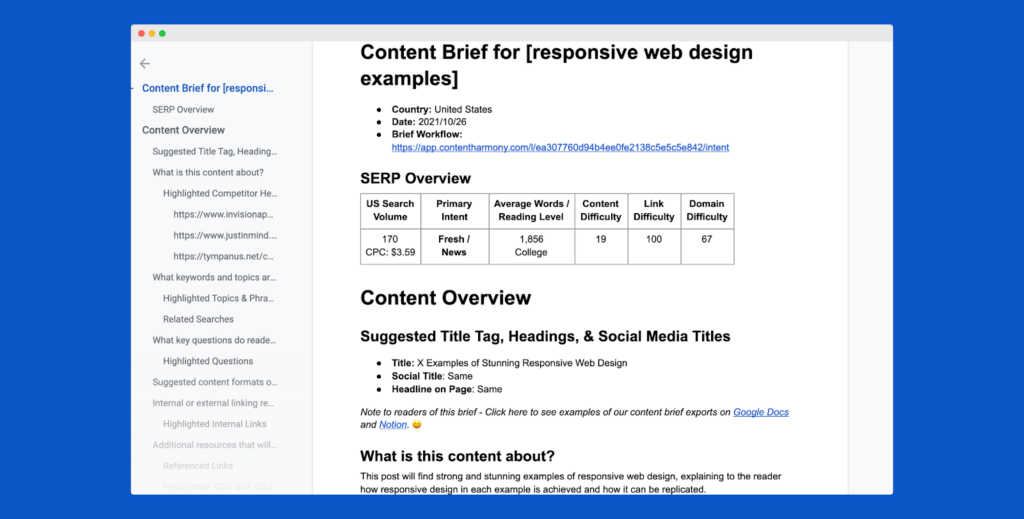
You may not trust AI to create the content for you.. I get that. I also don’t like the way AI sounds.
But I like the way AI can analyse a Keyword by the user intent while keeping the target group in mind. And I like the way AI can do a first research for a topic and create a content brief for me.
Automating this will save you hours of research time and help you produce higher quality content.
15. Audience interest prediction
Now this is a real interesting Automation idea. It is closely related to trends but on a smaller scale, instead in highly-relevant niches for you.
If you have enough content that is driving traffic, you can analyze (for example weekly) your performance and identify traffic increases which could be an indicator for an upcoming trend.
Identifying these trends can help you write super relevant content and actually drive more traffic.
Content Creation
16. Research and Outline generator

I don’t want AI to write my content for me. It just doesn’t feel right and I don’t want to be associated with bad quality AI content.
But I still want AI to help me.
So I use an AI research and outline automation workflow that is helping me to prepare the content. It can also include Meta description optimization and Title tag suggestions..
17. Blog post to podcast generator
Similar to the content repurposing I’ve mentioned before but this time, generating a podcast from a blog post.
This can be done completely by AI.
You can even train this AI with your own voice and it will generate the podcast for you.
18. Content Mixer for multiple Platforms
Similar to the one before but way bigger.
You could use AI to automatically transform your written articles into a variety of other content that will be automatically scheduled and published on social media platforms.
19. Content Scoring and Google Helpful Content Guidelines
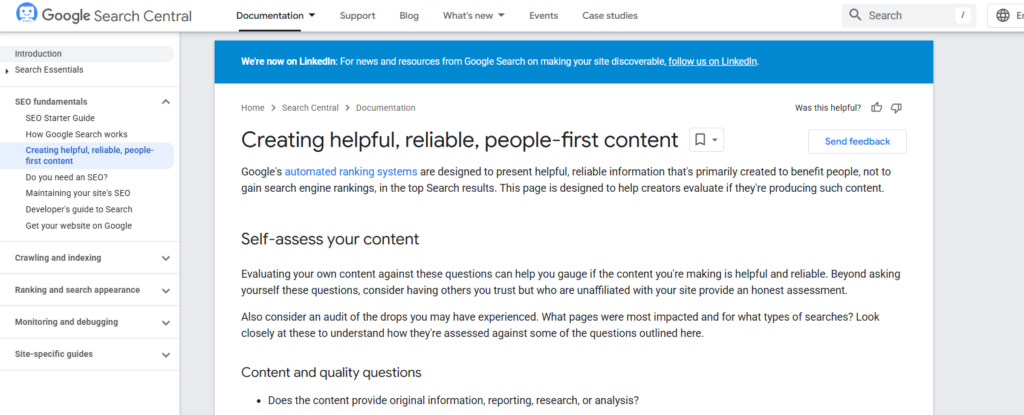
Sometimes we have an article on our site that is amazing (in our opinion) but we simply can’t get it to rank in front of our competitors.
Although there are many factors to be considered here, some of them even unknown, Google is actually providing some guidelines on how a piece of written content should be written in order to ‘rank high’.
An AI Automation that rates your existing content against these Helpful content guidelines and provides you with some actionable tips to improve your content, can be extremely helpful to get an honest outside view on our content.
At the end of the day, we all want to produce better content.
Technical SEO
21. Automated site audits
It’s hard to keep track of your sites performance. The bigger it gets, the more can go wrong.
This is where an automated site audit could help.
For example: On a weekly basis, the automation will check your sites ‘health’, look for broken links, keep track on your articles SEO performance, and so on…
And the AI will already send you alternative links or suggestions on what you could improve to increase your sites performance.
Completely individualized, with your KPIs.
22. Internal linking suggestions
Linking to topics internally is a great way to keep the user engaged and provide an in-depth ‘knowledge base’.
But here’s the thing:
The more articles you write (it gets worse if even more people are writing these articles), the less of an overview you will have about topical relations and whether you have already linked articles.
You could set up an internal linking suggestions automation workflow that is using AI to analyze your existing content and identify possible relations between your articles. That way, you can increase your topical authority and create a better user experience! (user might not bounce because all the information is there)
23. Core Web Vitals monitoring
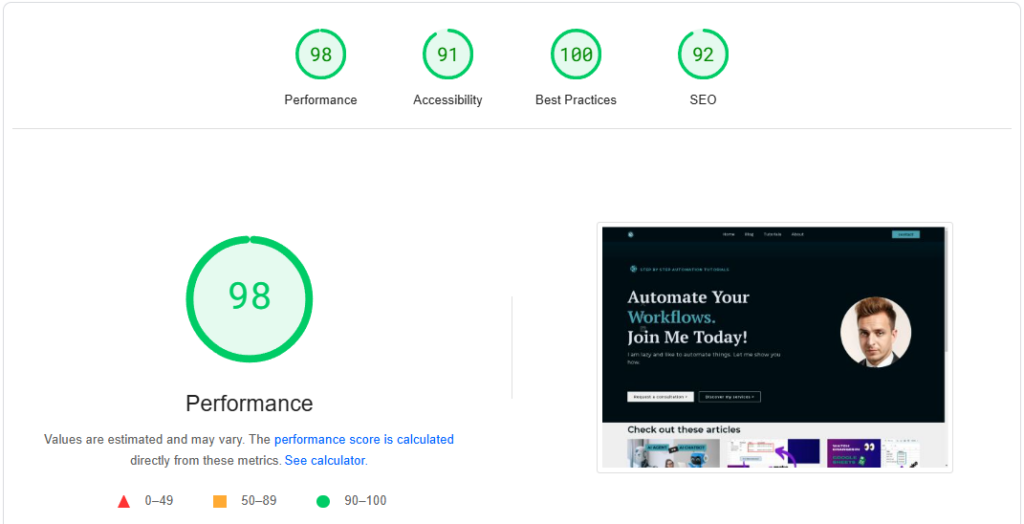
This is closely related to automated site audits but primarily focusing on your websites Core Web Vitals.
You want to provide the best user experience to your visitors. This means a good page responsiveness, fast loading time, and more…
An AI Automation that keeps track of your changes and regularly checks your core web vitals, can then also provide a list of improvements that you can implement to maintain a good user experience.
24. Mobile optimization checks
Mobile optimization checks can be one part of the core web vitals automation but I will mention it separately because of it’s possible impact.
Having a responsive, mobile-friendly website is a must nowadays.
You could set up an AI Automation that is regularly checking your mobile pages and identifying all the improvements you need to make. These per-page improvement can be collected and returned as a summary.
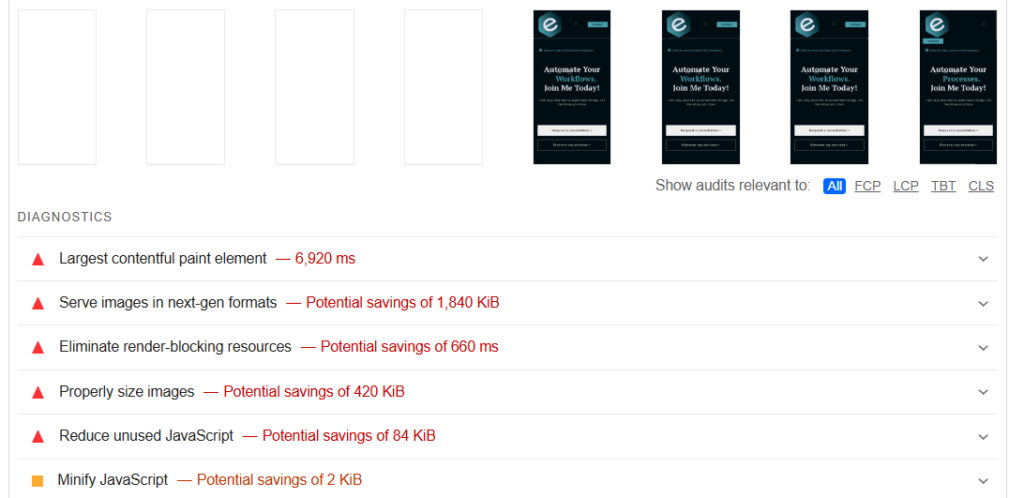
Performance Tracking
25. Advanced rank tracking
Imagine, your article has jumped to the first position on google.
Strategically, you would want to know the reason for this, so that you can replicate this for the rest of your content.
Keeping track of your ranking as well as any other changes on your website can give you these helpful insights.
The Automation workflow will collect all the information and the AI will be able to interpret them.
26. Traffic pattern analysis
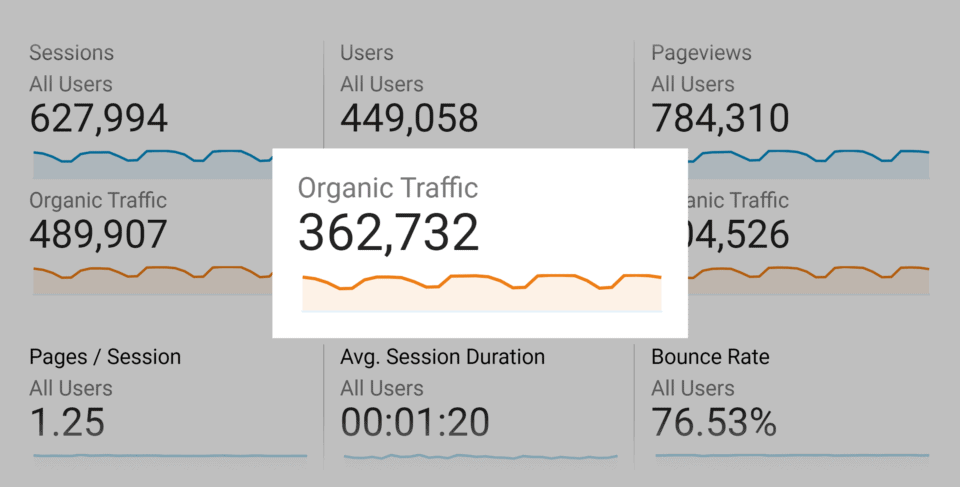
What’s the entry point of your visitors? Where do they go from there? How many average pageviews do you get per visitor?
All of these questions can easily be answered by looking at your Google Analytics dashboard.
But what do you do with this information?
This data can be used to analyze traffic patterns and identify possible new content clusters, or simlpy give you some insights on potential content gaps.
An AI Automation workflow could run monthly (or more frequently depending on the amount of content you create) in the background and report automatically back to you.
27. ROI predictions
If you are selling a service or a product on your website, you could use AI to identify content that will most likely increase your ROI.
For example, you write two articles and need 5 hours for each article.
- Article A will have around 5.000 monthly visitors.
- Article B will only have about 50 monthly visitors.
The obvious choice would be to write about Article A, right?
Well, it depends!
If article A doesn’t convert any visitor into a paying customer but article B converts 4%, it will generate 2 paying customers.
Therefore, writing article B would be the better choice.
Of course, this is a very simplified example, but you could use AI to analyse your traffics data and conversion rates to suggest new content and rate your current ideas.
28. Automated reporting
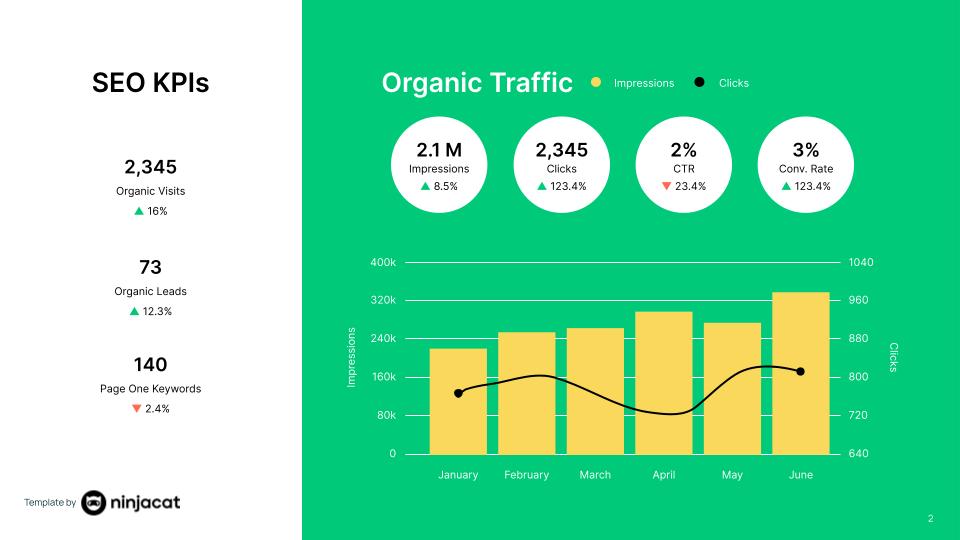
It’s important to monitor the performance of your site as well as your posts (and other metrics you want to keep track of).
But instead of manually checking your view count and website loading time, you could run a weekly automation workflow that will do this work for you, and put everything together in a report.
This can also be interesting if you want to share the reports with your stakeholders or peers to keep them up to date.
29. Conversion tracking
If you are selling products or services on your site, you want to always be up to date on your current conversion rates.
The faster you identify winning (or losing) strategies, the faster you can adjust or double-down.
Tracking your conversion can also be combined with A/B tests!
How to get started with AI Automation for SEO
Seeing this amount of possible SEO automations will probably make it hard to decide which one to start with.
Here are some tips on how you can get started:
- Start small with one specific use case (e.g search intent analsis)
- Define metrics you want to improve on
- Test different approaches and compare metrics
- Upskill & train your team continuously
- Involve your team in the decision making process
- Monitor the results of your automations
- Scale successful automations
- Extend current automations
You should consider using dedicated AI SEO Tools
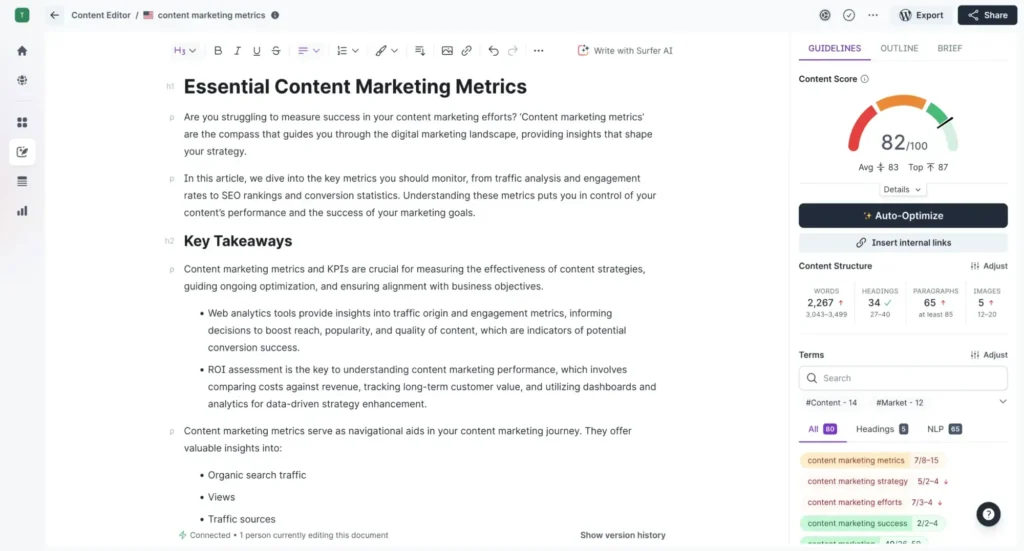
An easy way to get started with AI Automation is to use predefined AI SEO tools. They might not be as sophisticated and flexible as cutom automations but they are a good way to get started and identify requirements for future implementations.
- Surfer SEO: Content optimization
- MarketMuse: Content strategy
- Clearscope: Content briefs
- Frase: AI writing assistance
- SE Ranking: Technical SEO (Insider tip!)
If you are looking for more SEO Automation tools, you can check out this article from growthbarseo.
My take on AI Automation for SEO
Using custom AI Automation workflows for SEO helps to reduce a crazy amount of time, money and stress.
Thanks to AI, I am able to write more and better content in the same amount time like before. Automation itself is also super helpful to remove all these tedious, repetitive tasks that don’t really bring any benefit.
Of course, integrating these automations takes time and knowledge, and a little bit of experimentation, because all use cases and requirements are slightly different…
But the benefits of having AI as a partner in SEO make the investments worth every penny (if done correctly).


